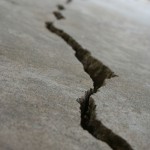

Earthquake risk in the San Francisco Bay Area is on the rise while earthquake insurance penetration statewide has dropped significantly since the Loma Prieta earthquake that rocked the Bay Area 25 years ago, causing nearly $6 billion in economic losses, an analysis release Monday shows.
The next “big one” has potential to be financially devastating to the Bay Area economy, according to an RMS analysis.
A worst-case, magnitude 7.9 earthquake on the San Andreas Fault could strike an urban center with 32 times the destructive force of Loma Prieta, potentially causing commercial and residential property losses over $200 billion, the analysis shows.
Residential earthquake insurance penetration in California, which would be vital to facilitate rebuilding after an earthquake, has dropped by more than half since Loma Prieta, with only 10 percent of households currently covered. Without insurance, homeowners may walk away from their homes after an earthquake if the residual value of their property is less than the outstanding value of their mortgage, according to the study.
 The magnitude 6.9 Loma Prieta earthquake on Oct. 17, 1989 caused 63 deaths, injured 3,757 people, destroyed more than 11,000 homes leaving 12,000 individuals displaced and caused $6 billion in property damage.
The magnitude 6.9 Loma Prieta earthquake on Oct. 17, 1989 caused 63 deaths, injured 3,757 people, destroyed more than 11,000 homes leaving 12,000 individuals displaced and caused $6 billion in property damage.
While the earthquake was centered almost 50 miles from San Francisco, liquefaction of reclaimed land in parts of San Francisco and Oakland elevated the impact and proved a significant factor in the overall $6 billion in loss, according to RMS. Liquefaction from earthquakes still poses a significant threat to buildings situated around the San Francisco Bay.
There is a 63 percent chance that a magnitude 6.7 or larger earthquake will hit the Bay Area over the next 30 years, according to the United States Geological Survey.
According to RMS modeling, the most likely location of the next big earthquake to impact the San Francisco Bay area is on the Hayward fault, which could reach a magnitude of 7.0.
The area is also at risk of an earthquake on one of the many other faults in the area. For example, an earthquake on the San Andreas fault could reach magnitude 7.9 could cause commercial and residential property losses surpassing $200 billion. A cluster of smaller earthquakes could also impact the area, which, sustained over months, could have serious implications for the local economy, according to RMS.
While the Bay Area has become more resilient to damage from shaking, liquefaction still presents a major risk, in particular in low-lying parts of San Francisco and Oakland with
the risk for loss of life, property and prosperity are higher than ever in the San Francisco Bay Area, according to RMS.
Since 1989, the population of the region has grown 25 percent, the value of residential property has risen 50 percent to $1.2 trillion and commercial activity has significantly expanded.
While earthquake insurance penetration remains low, a magnitude 7.0 earthquake rupturing on the Hayward fault could produce $25 billion in insured loss across residential and commercial lines of business, RMS stated.